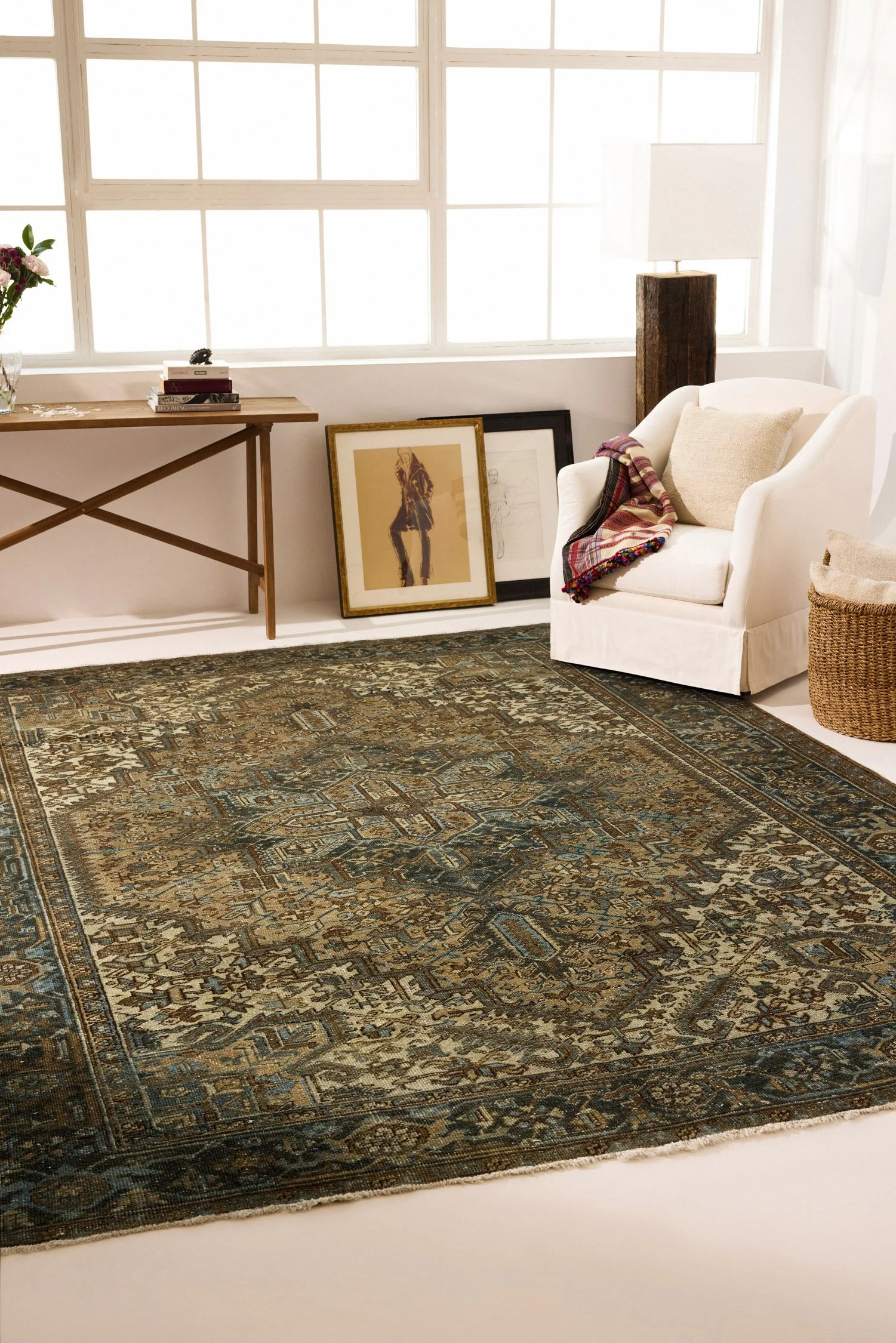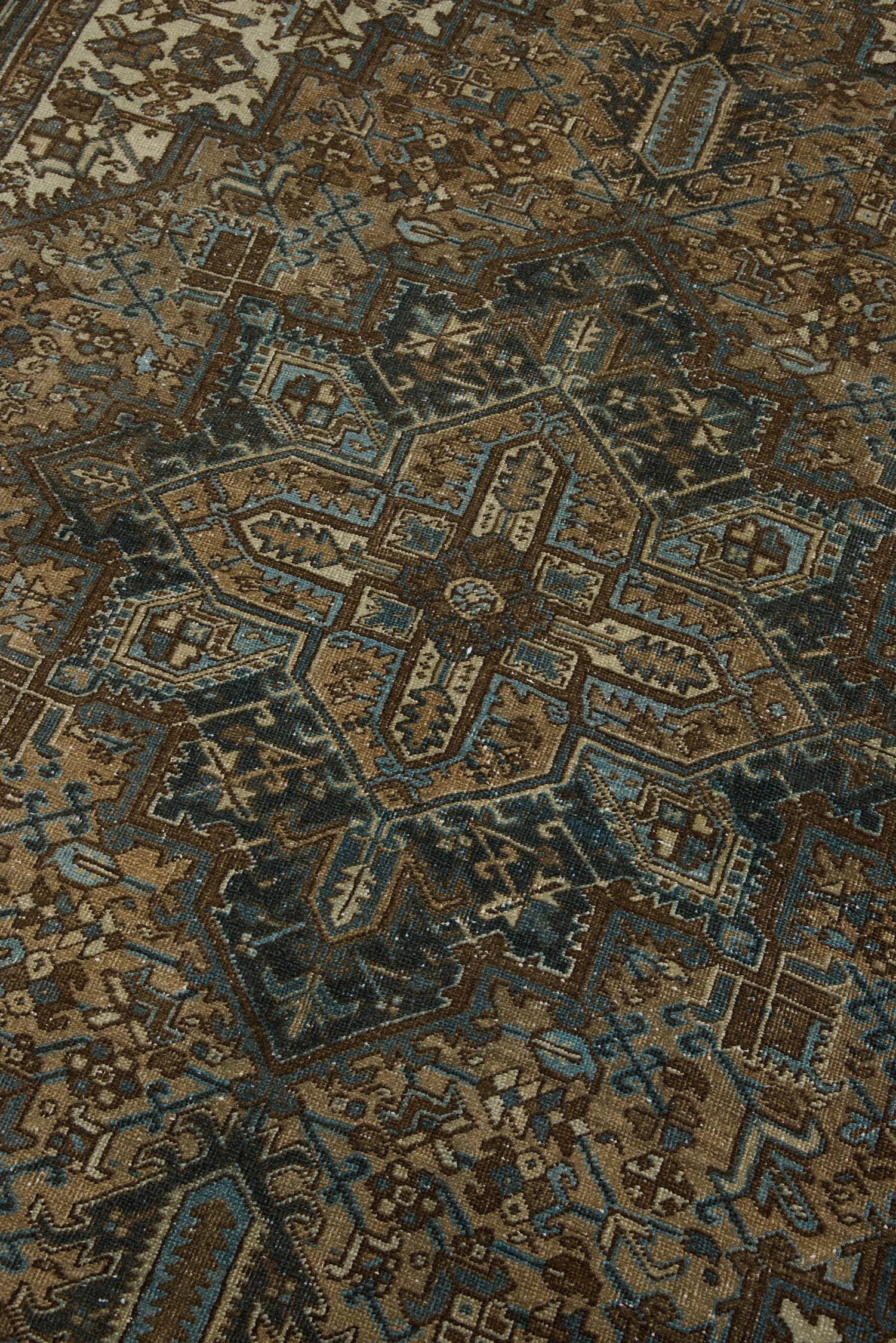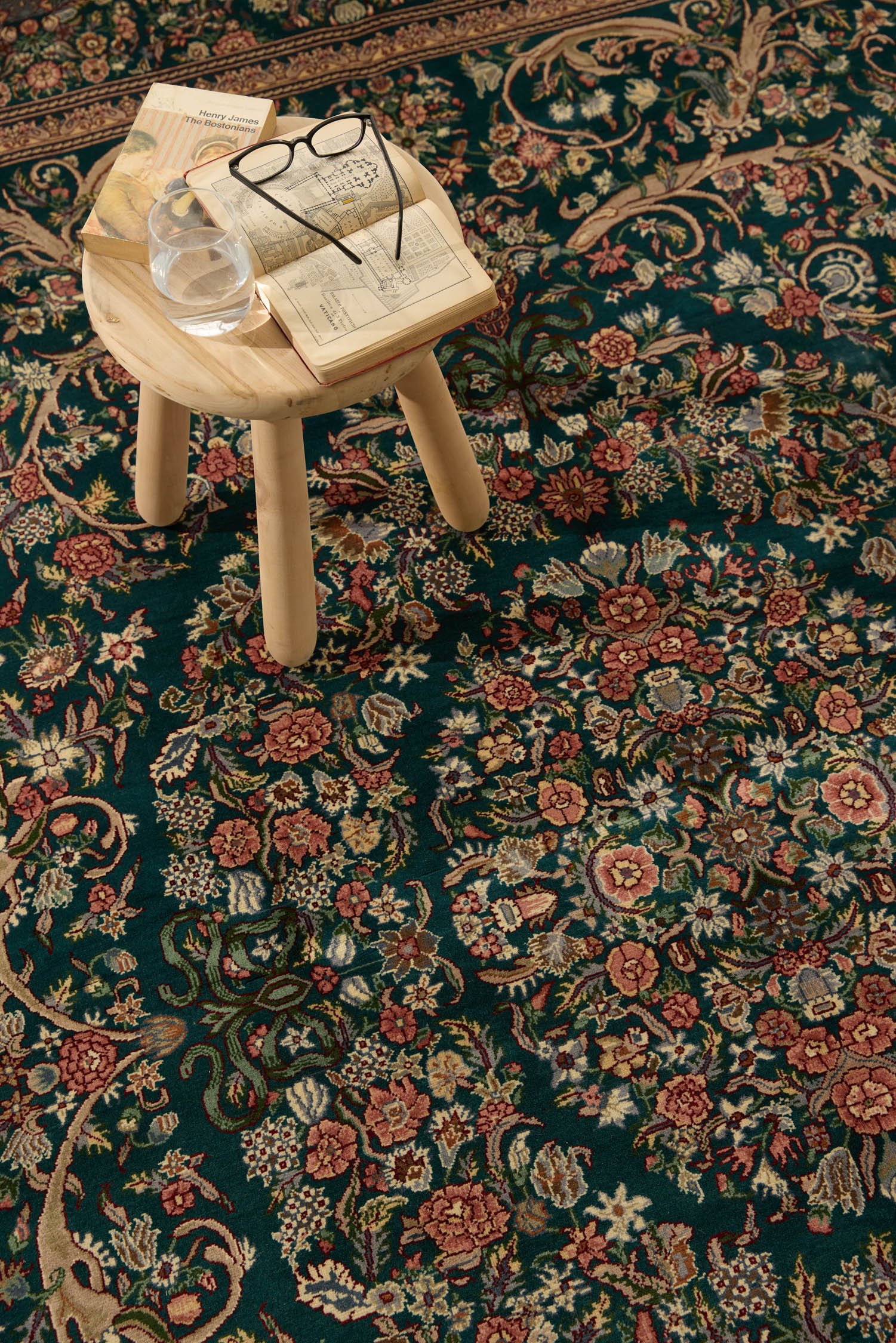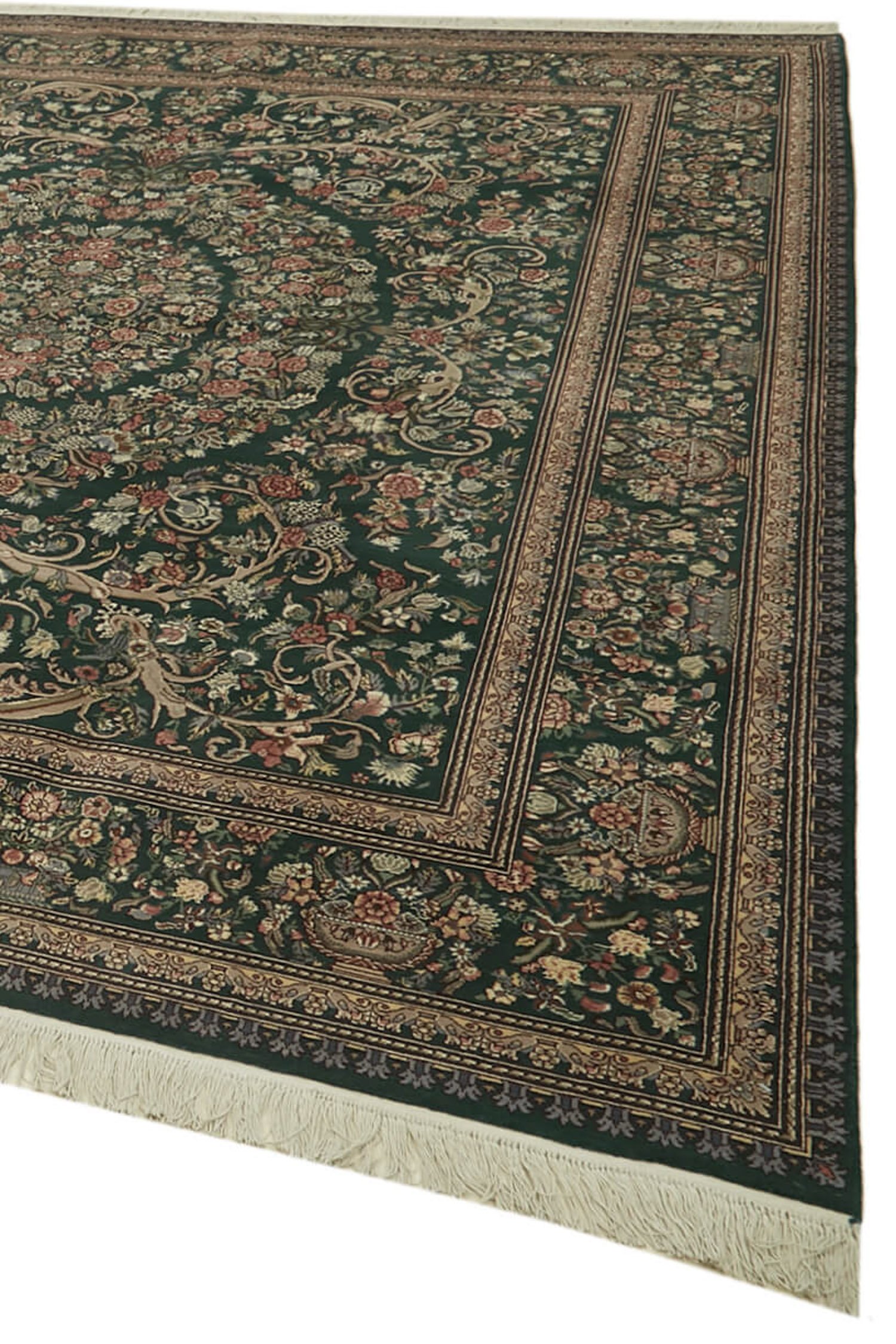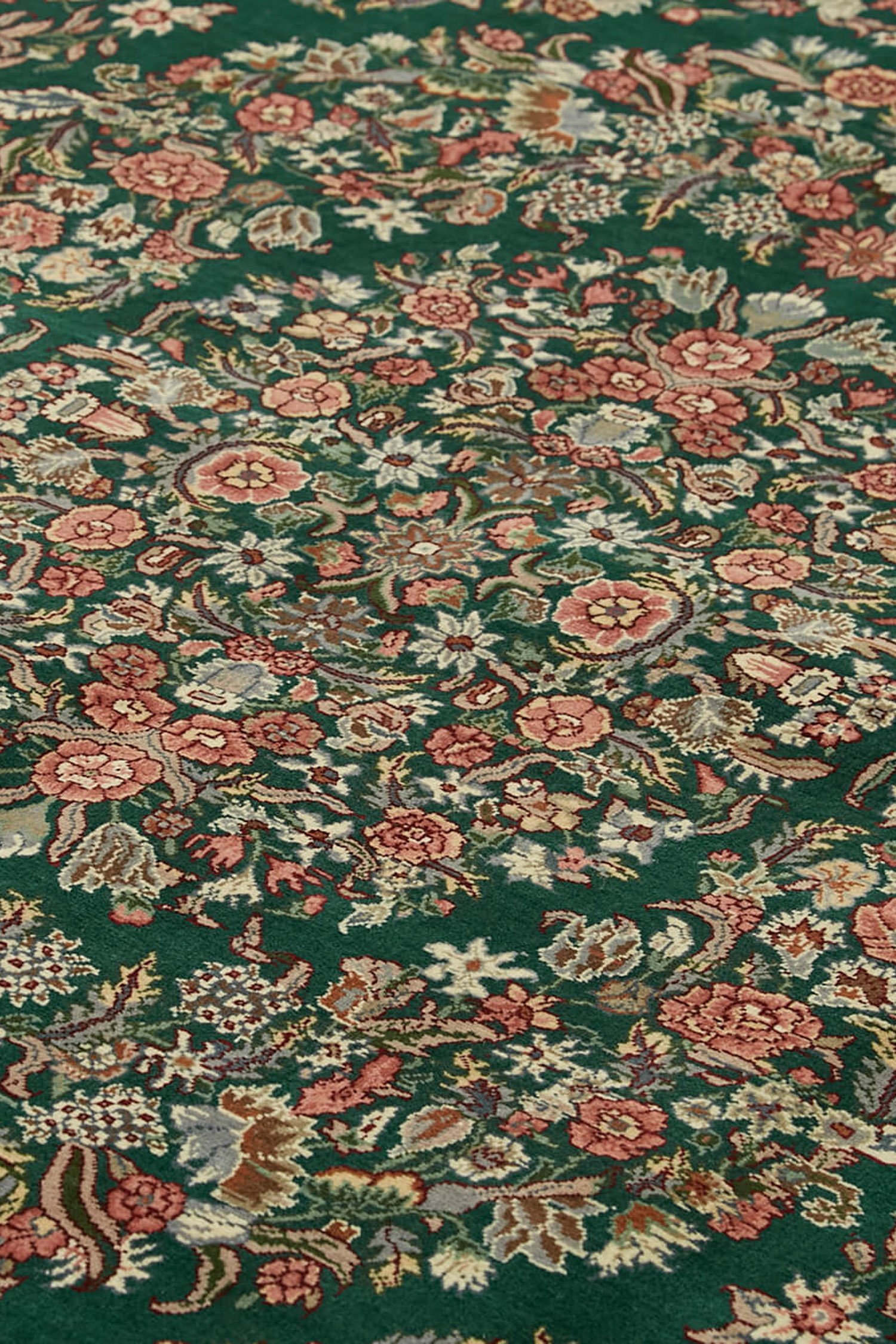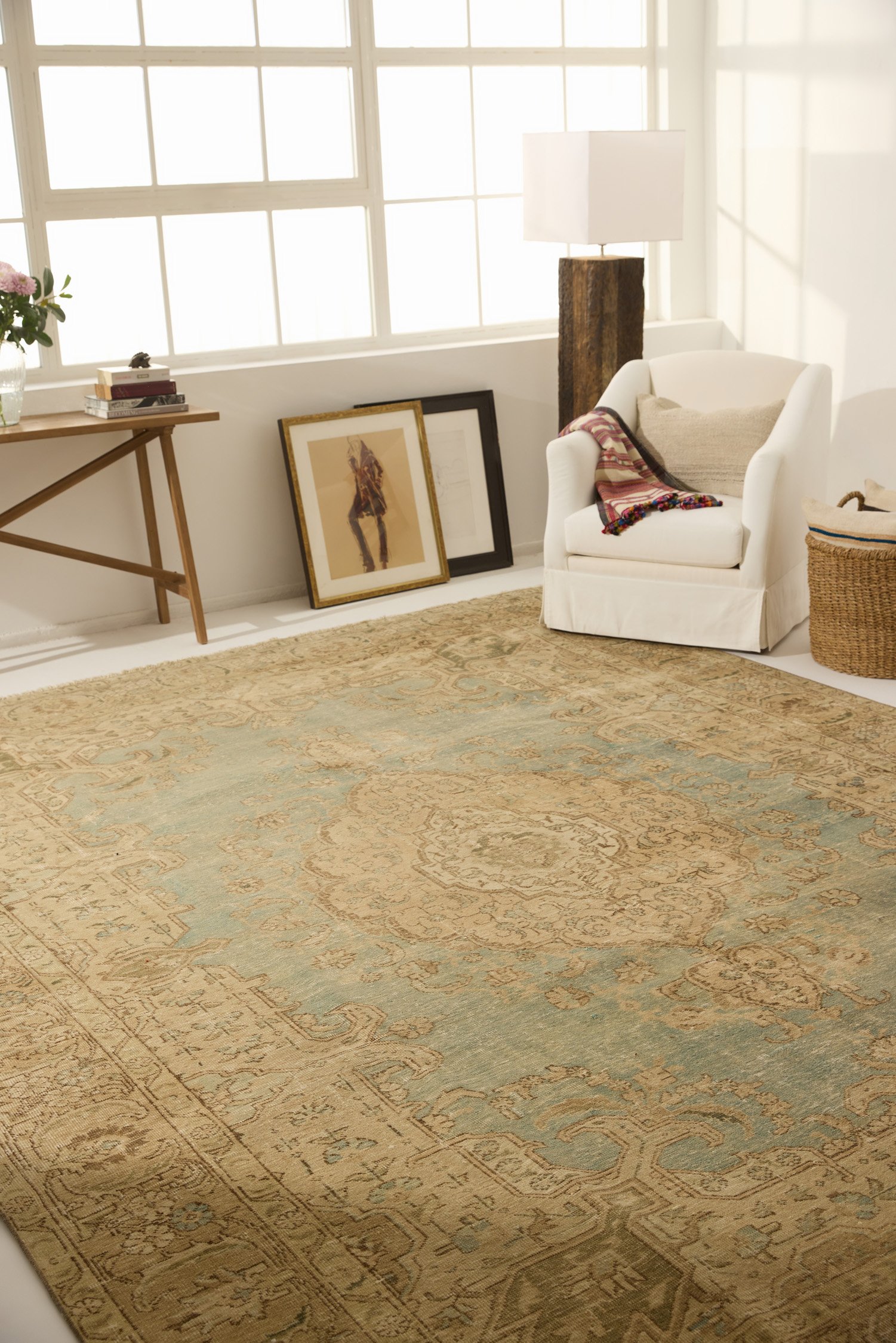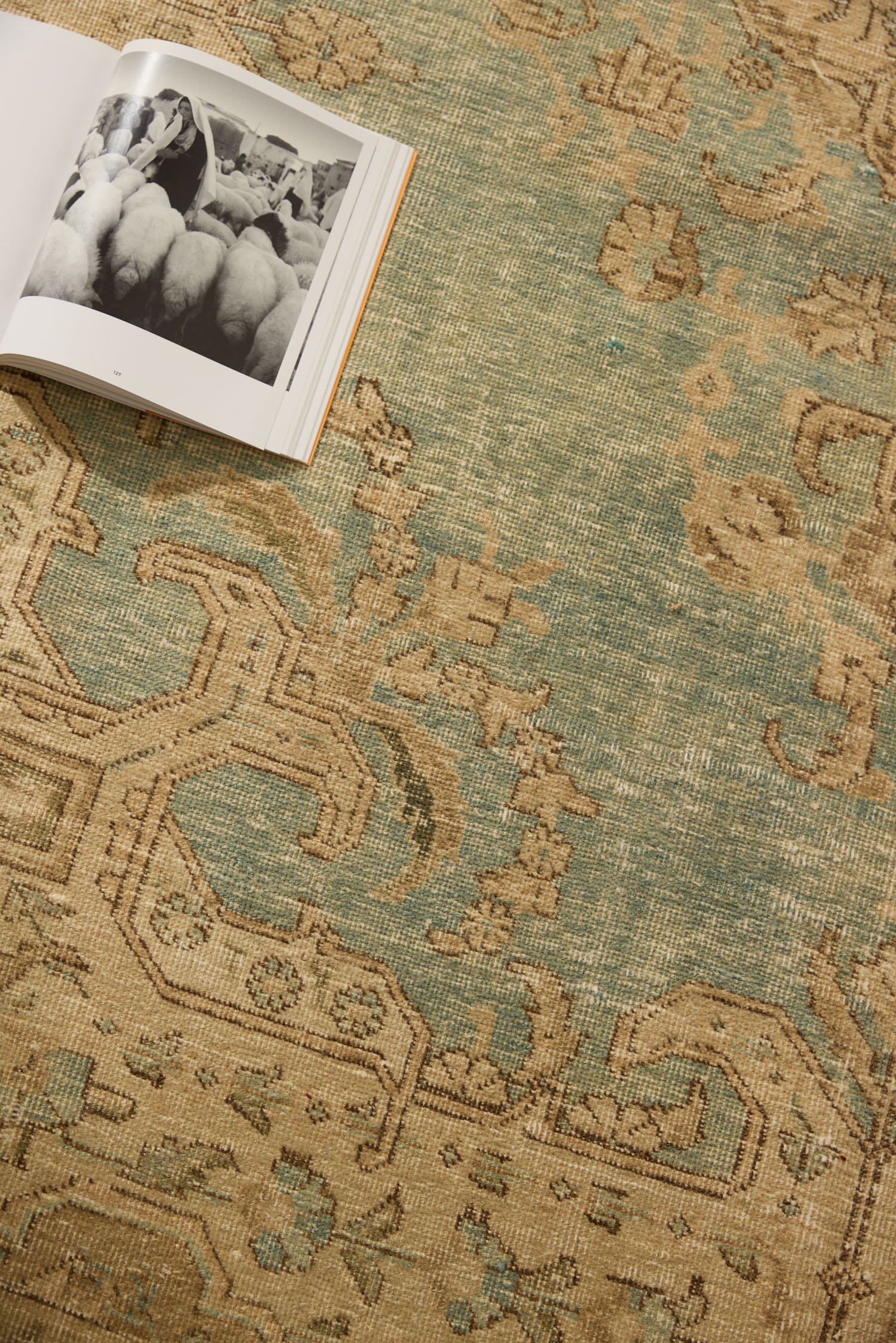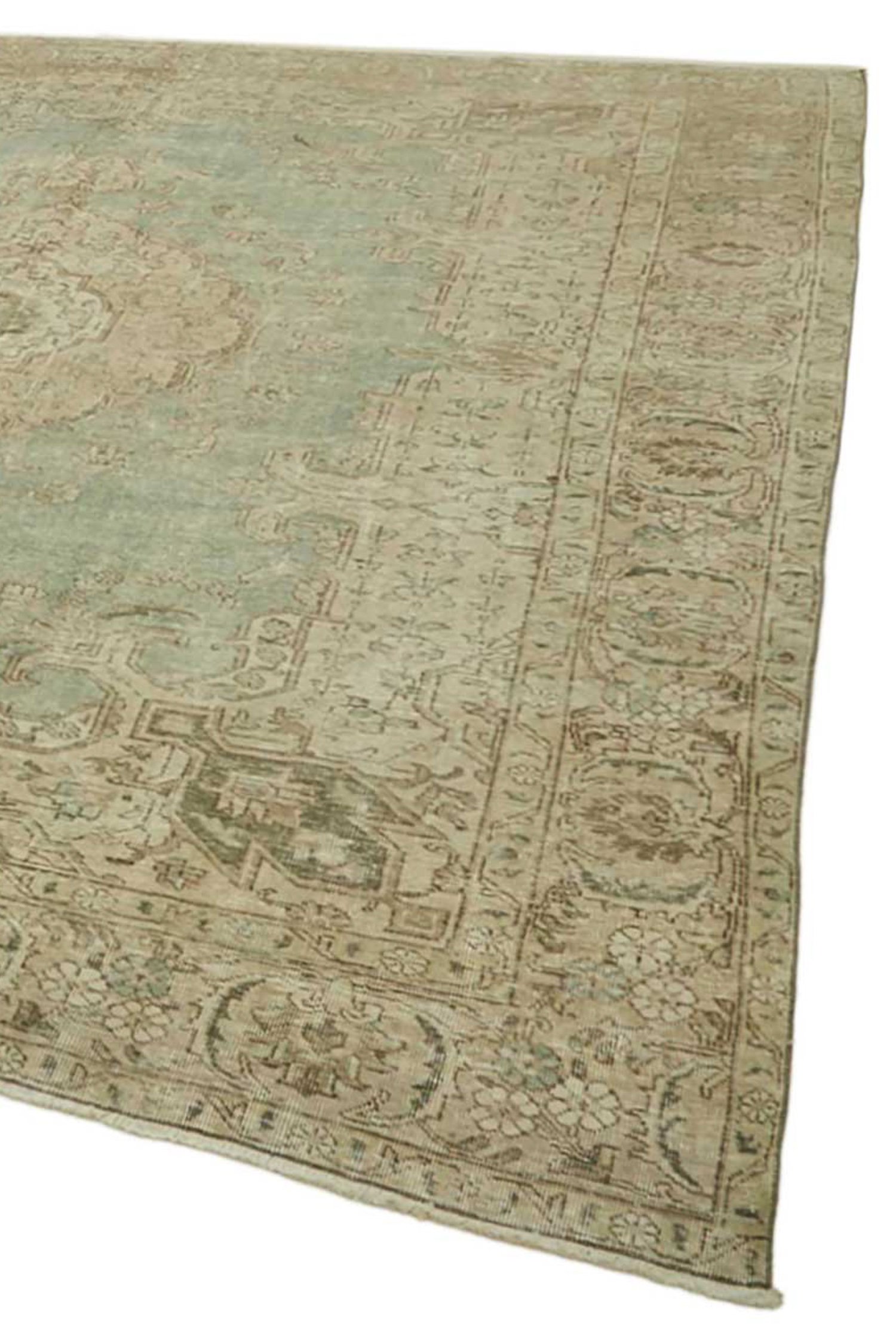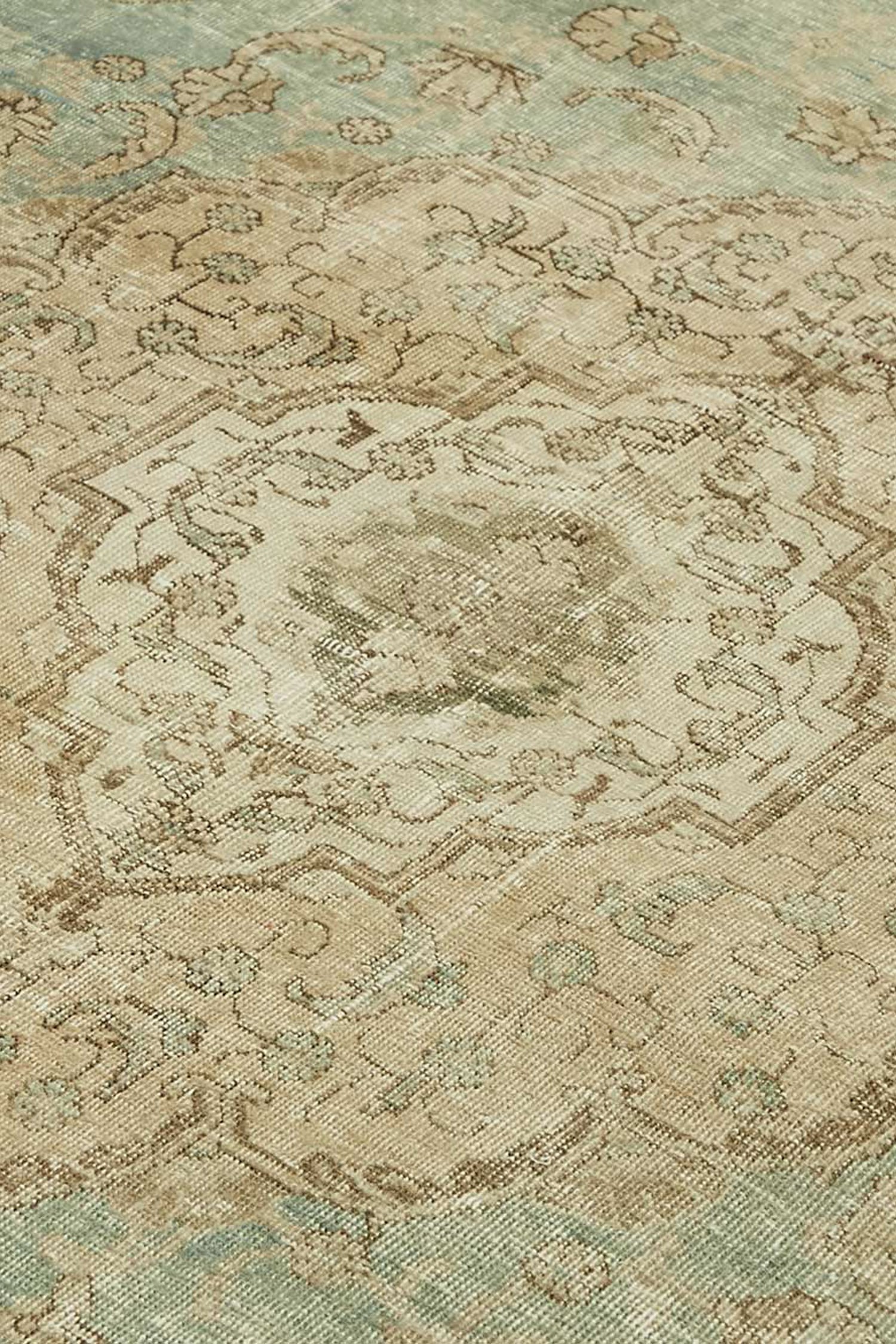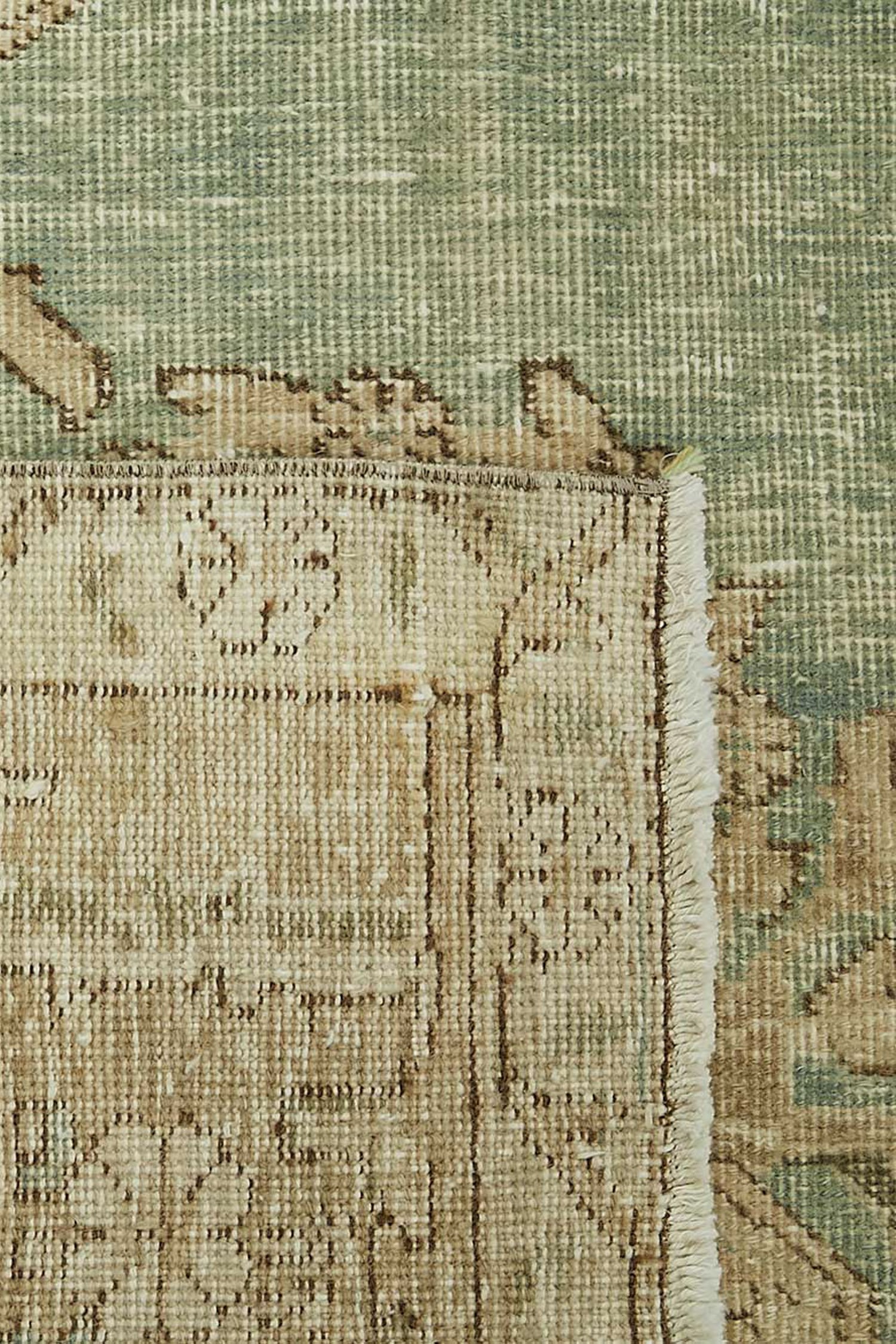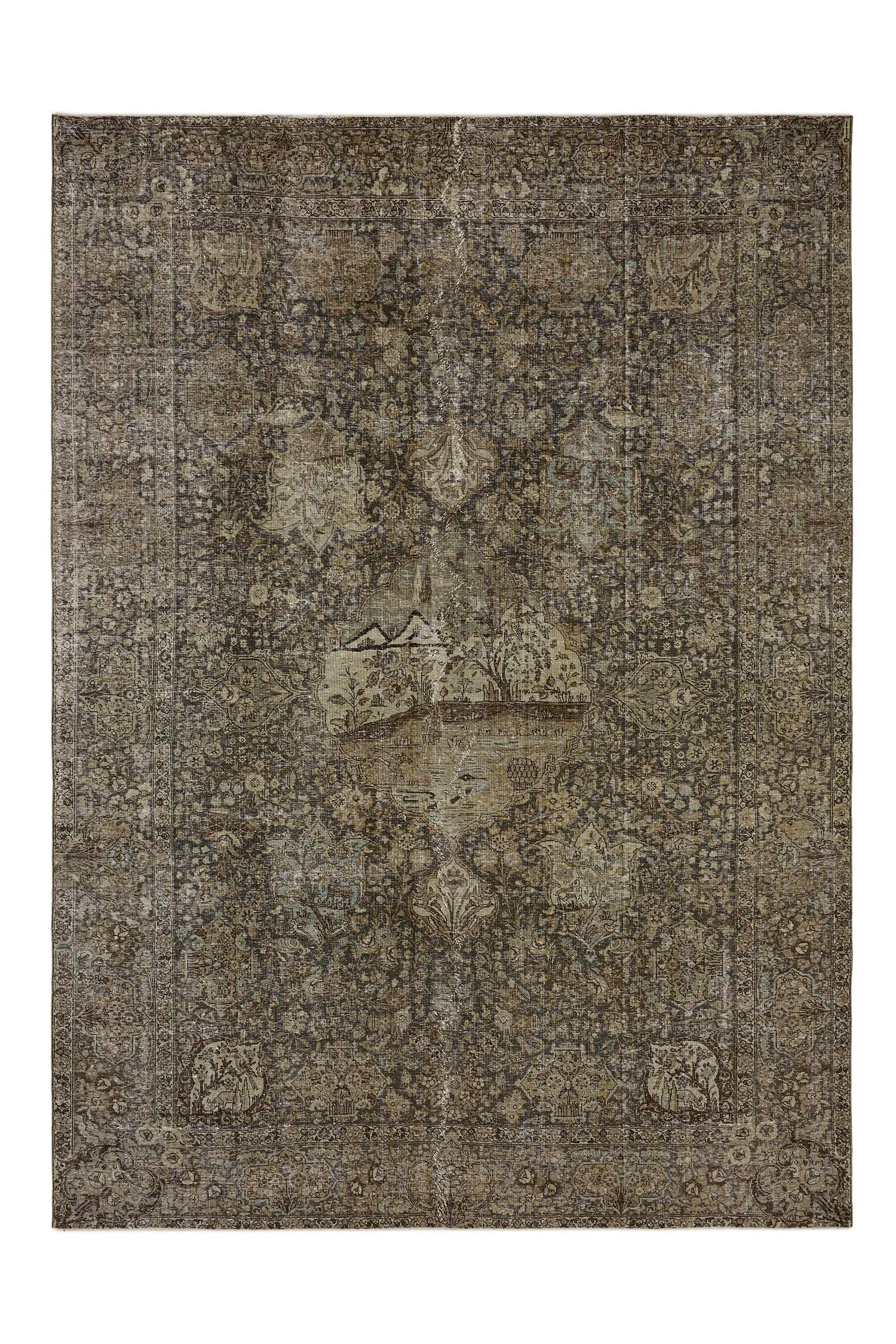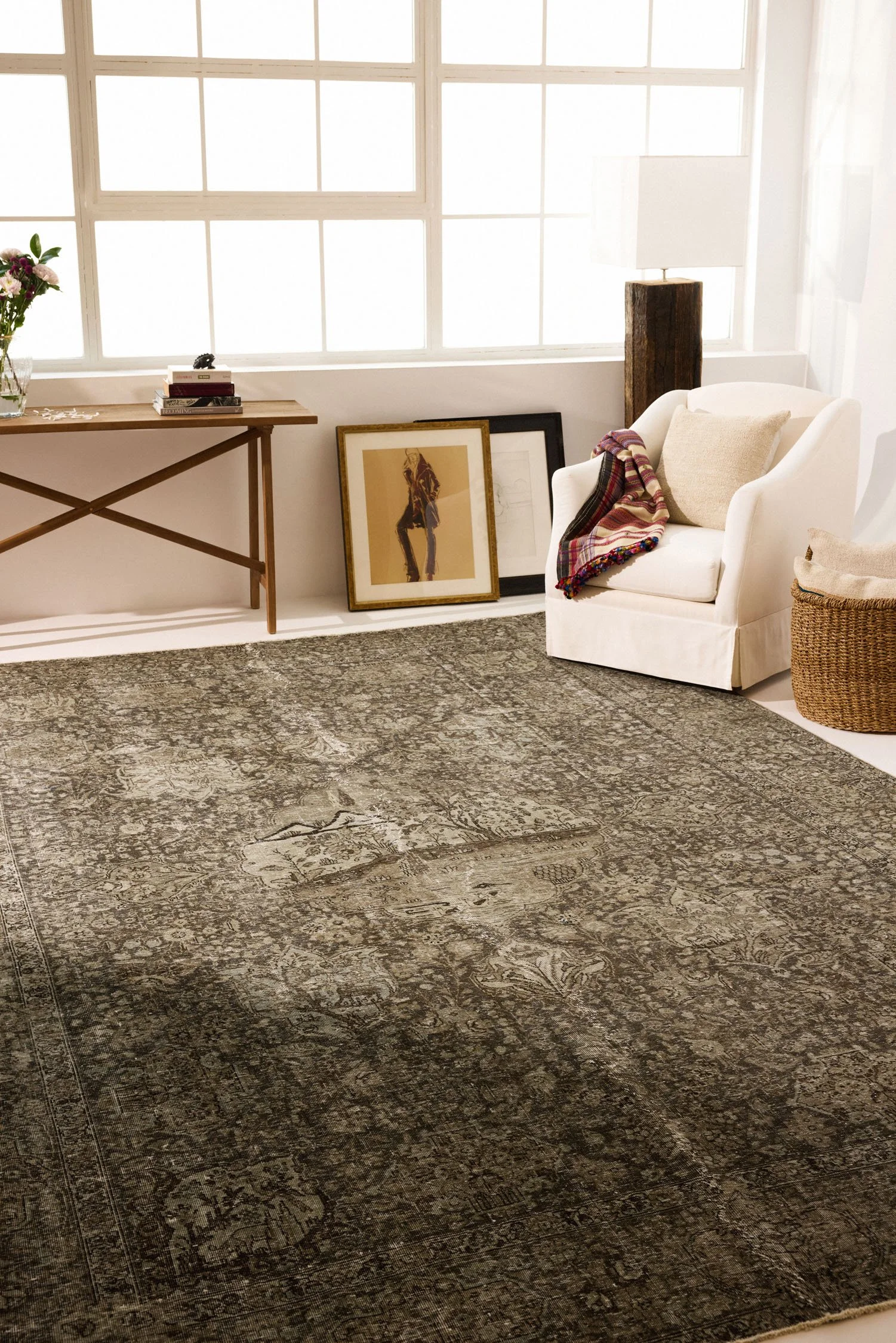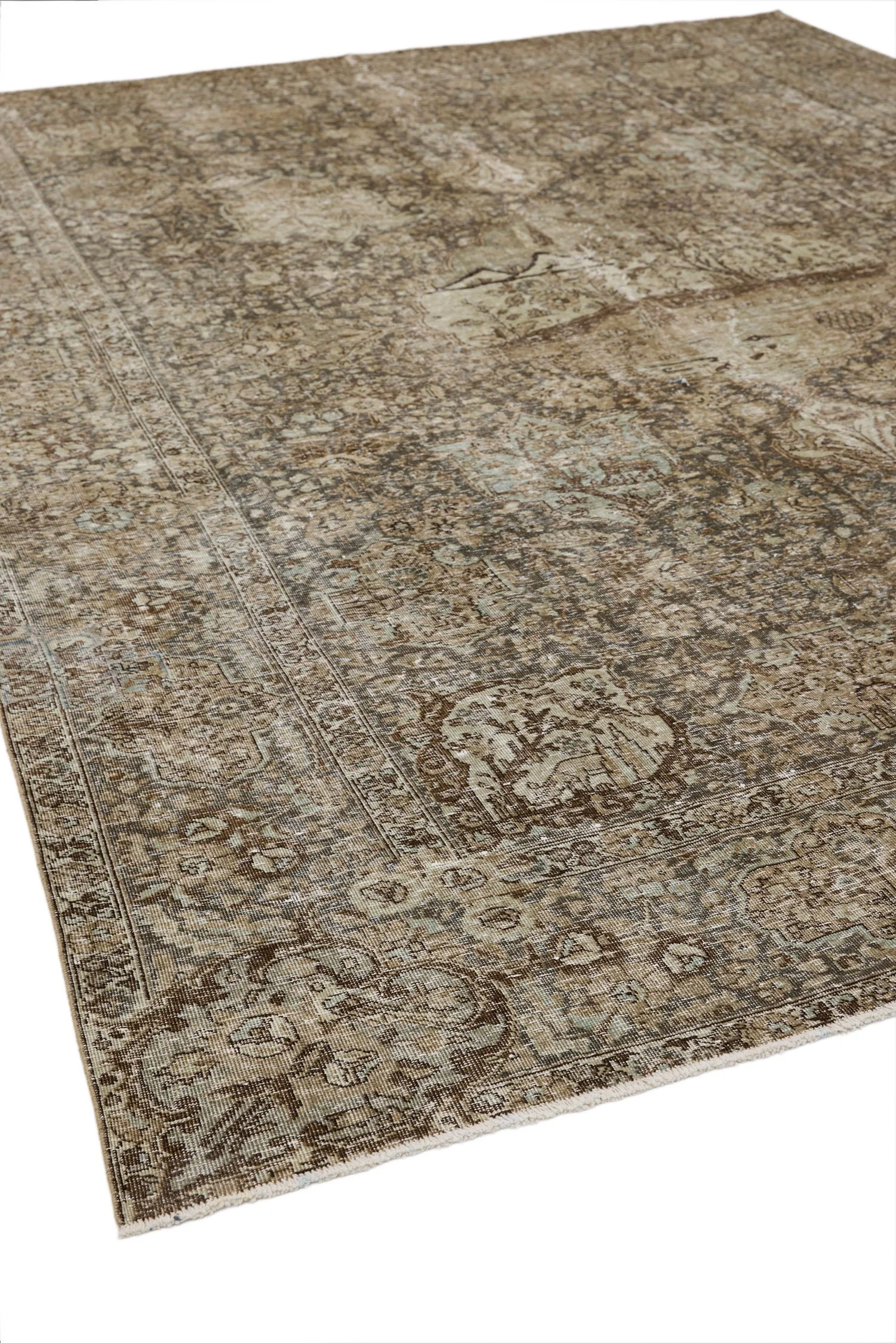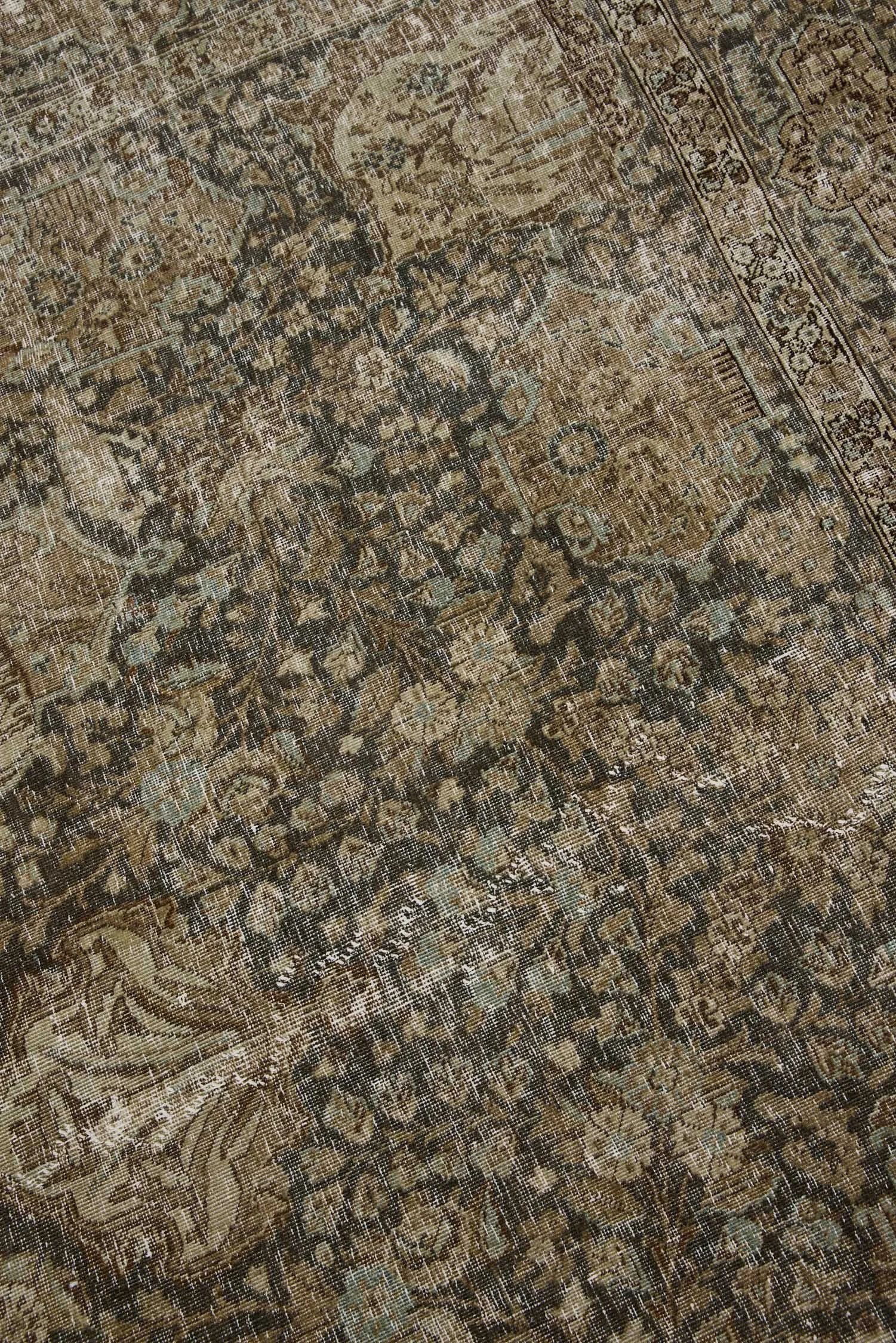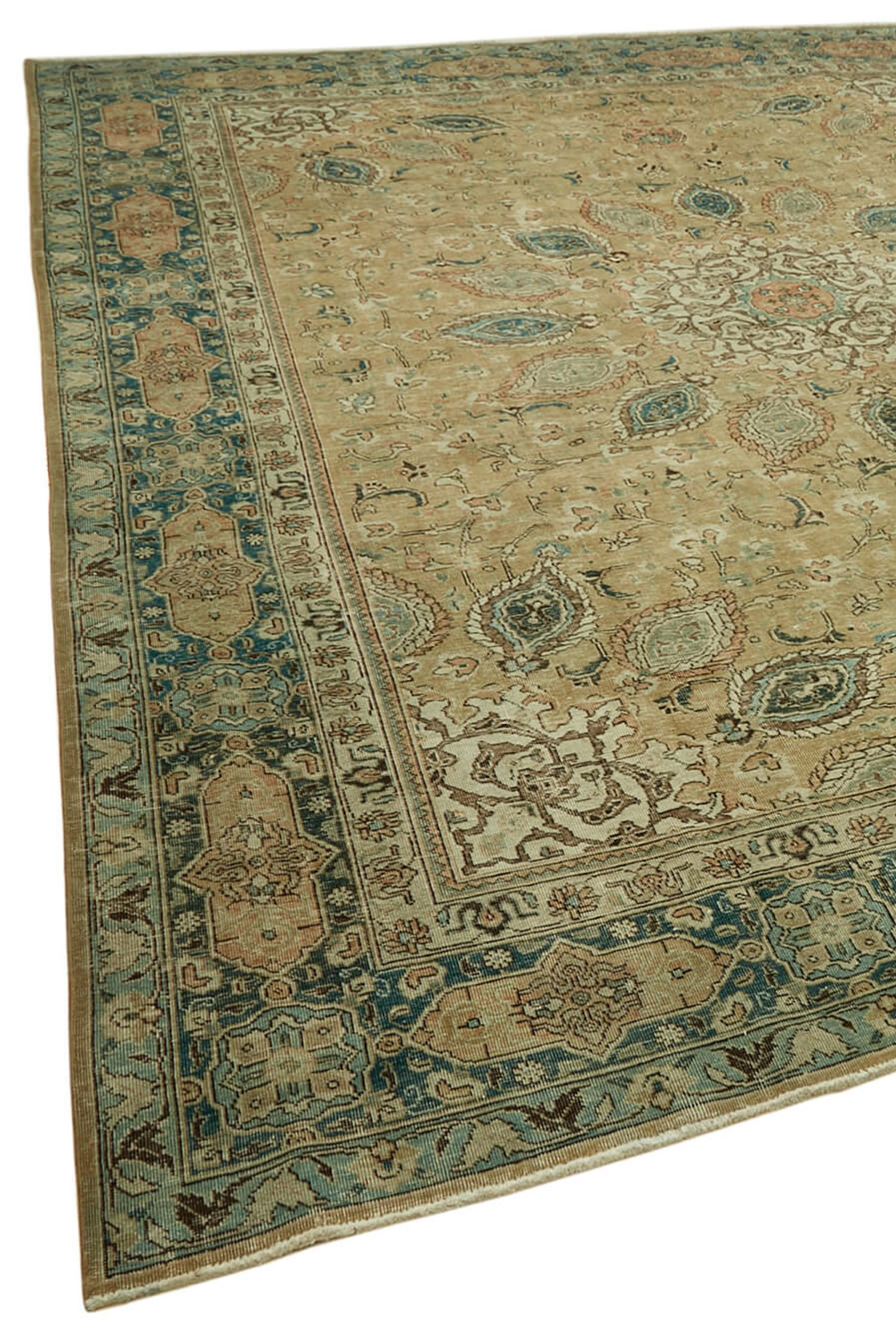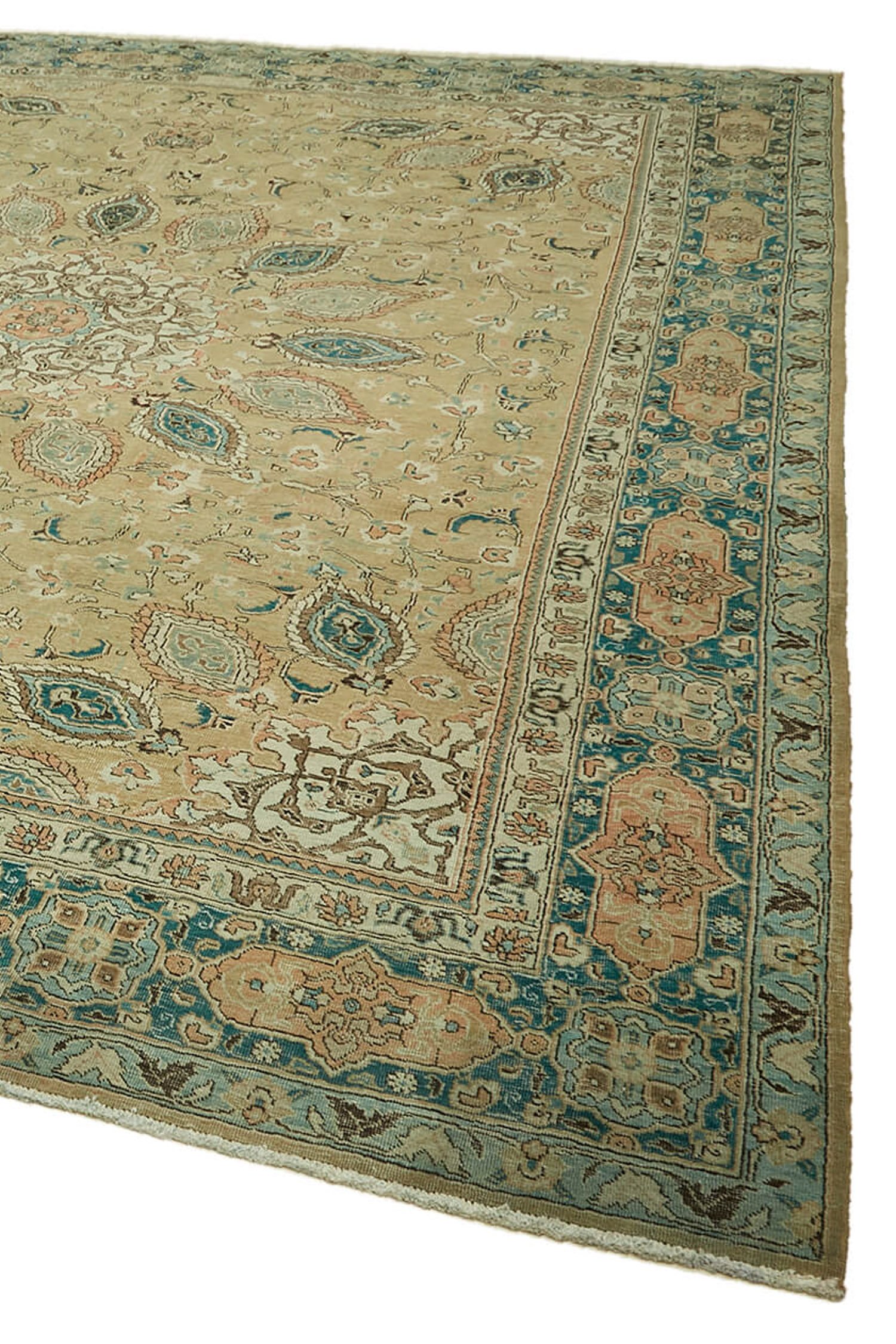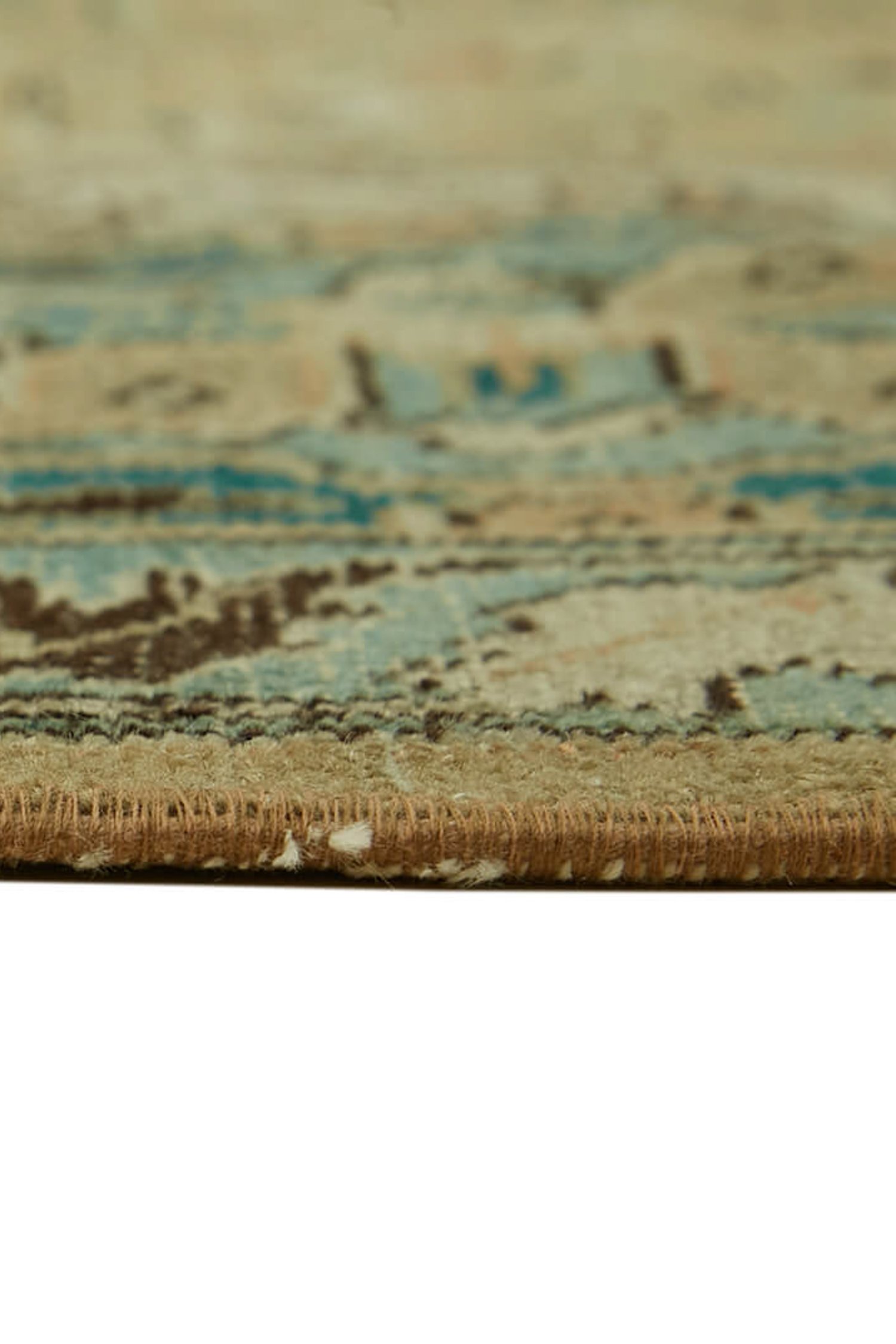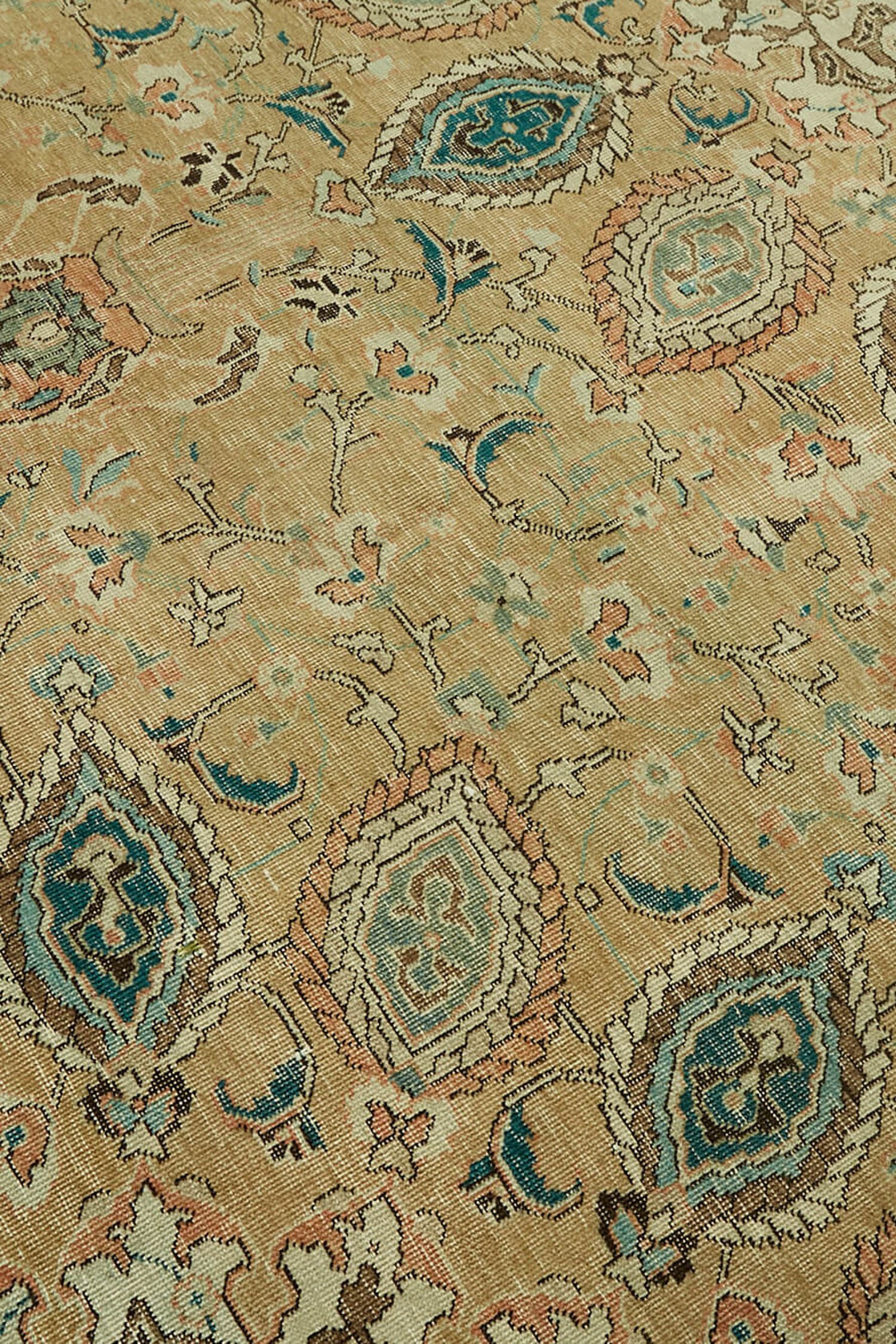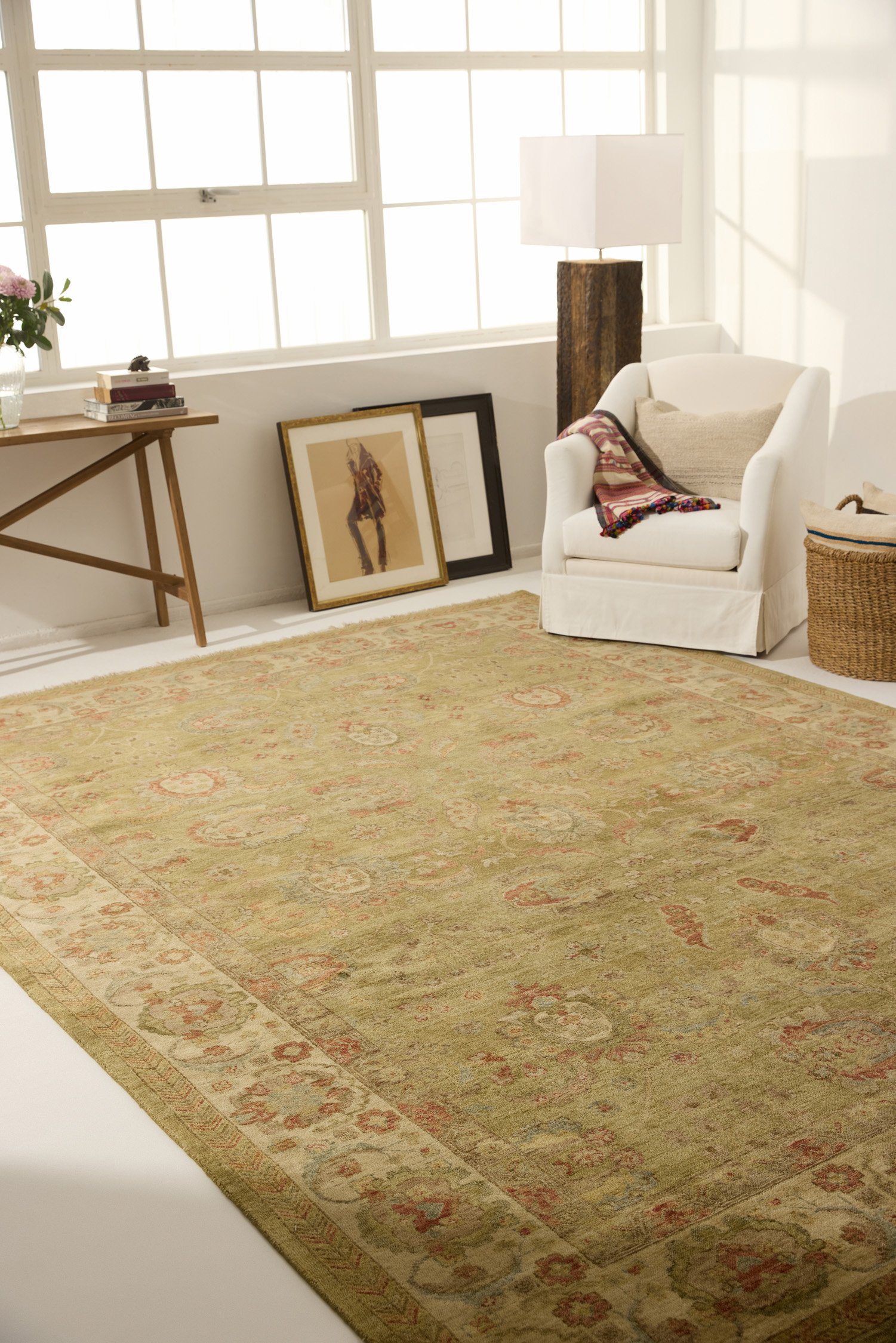Heritage and Craftsmanship
The Heriz weaving tradition reached particular refinement during the 1940s, when village artisans had perfected techniques that balanced bold geometric impact with sophisticated color relationships. This period produced rugs that demonstrated how traditional patterns could achieve contemporary relevance through masterful execution and thoughtful design choices.
Design Elements
The classic medallion layout creates architectural focus through its angular spandrels and densely patterned borders, showcasing the geometric precision that characterizes the finest Heriz production. Strong structural elements maintain visual order while allowing individual motifs to contribute their own character to the overall composition. The densely patterned border provides rhythmic framing that supports rather than competes with the central design, while cool teal and indigo accents add richness that prevents the earth tones from becoming monotonous.
Placement
The substantial 8'5" x 10'8" dimensions work beautifully in living rooms, dining areas, or bedrooms where the rug can anchor furniture groupings while providing sophisticated color interest. The earthy brown foundation with ivory highlights and cool blue accents creates a versatile palette that supports both warm and cool decorating schemes.
Care Recommendations
To preserve the rug's beauty:
Rotate periodically for even wear
Vacuum regularly using a suction-only setting
Address spills immediately by blotting, never rubbing
Professional cleaning recommended annually
Avoid direct sunlight to maintain color integrity
Heriz rugs from this exceptional period embody the enduring charm of Oriental carpet weaving's village traditions, where strong geometric structures met sophisticated color sensibilities to create pieces that transcend their utilitarian origins. Their authentic character continues to enhance contemporary interiors with genuine cultural depth.



